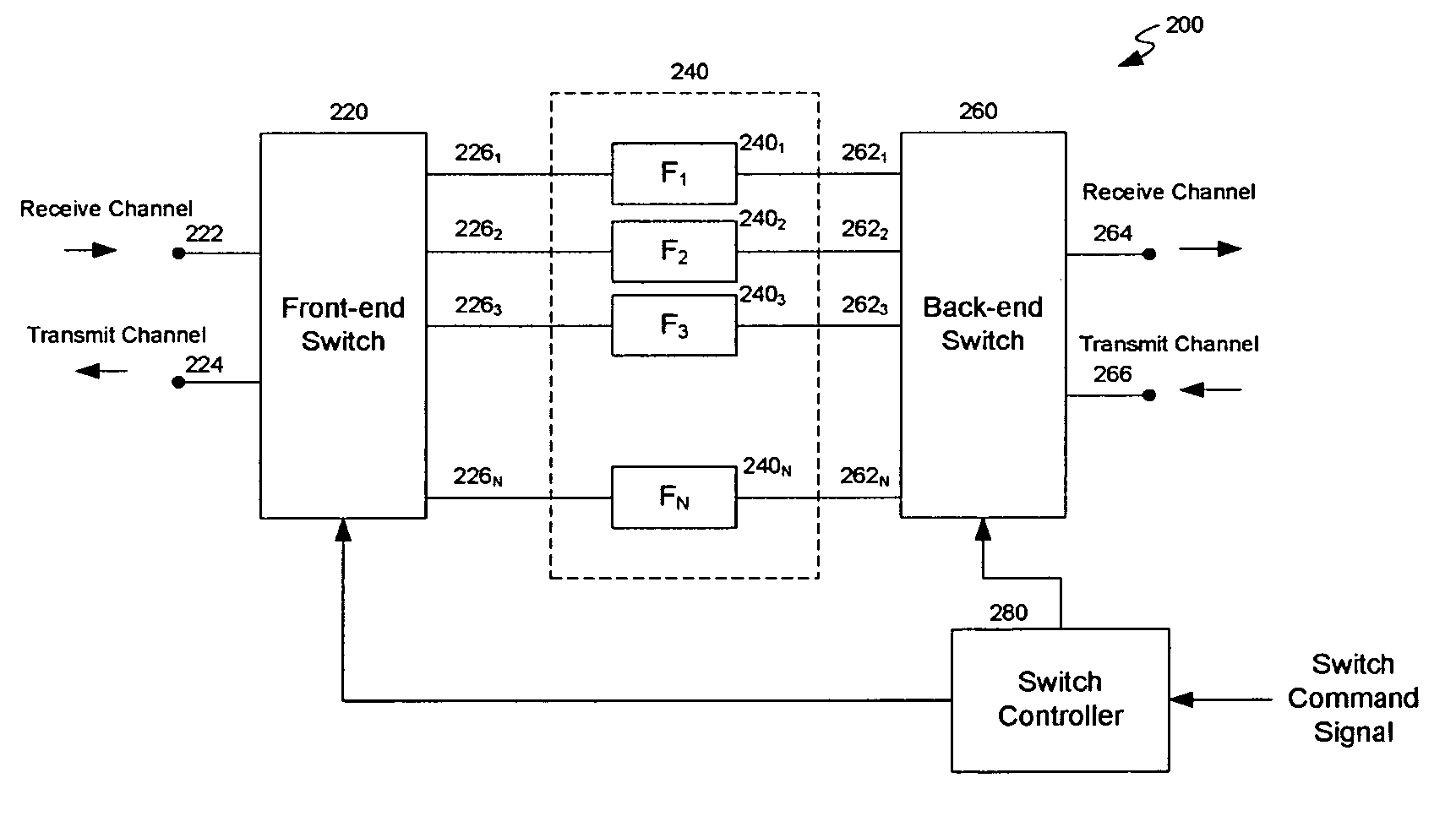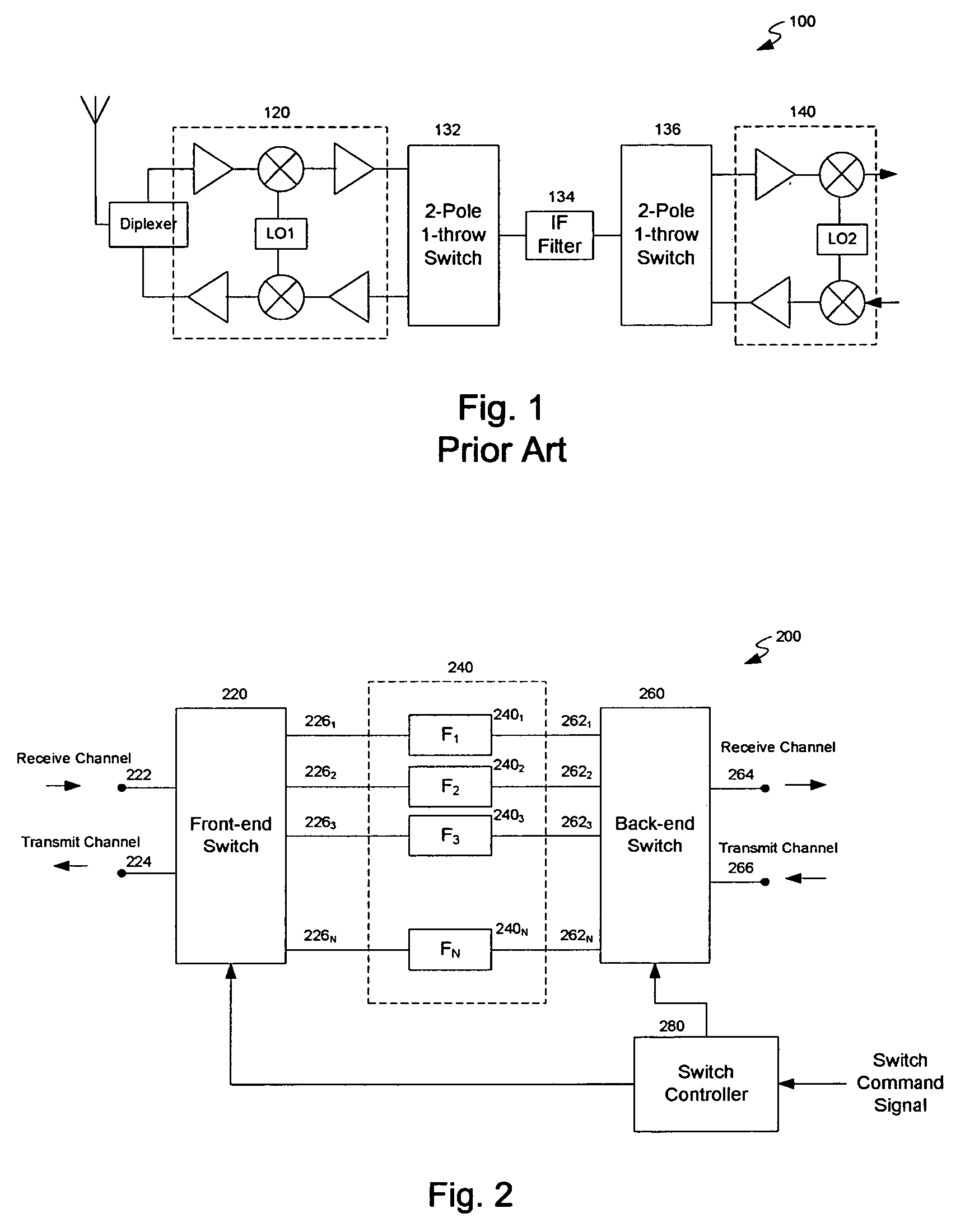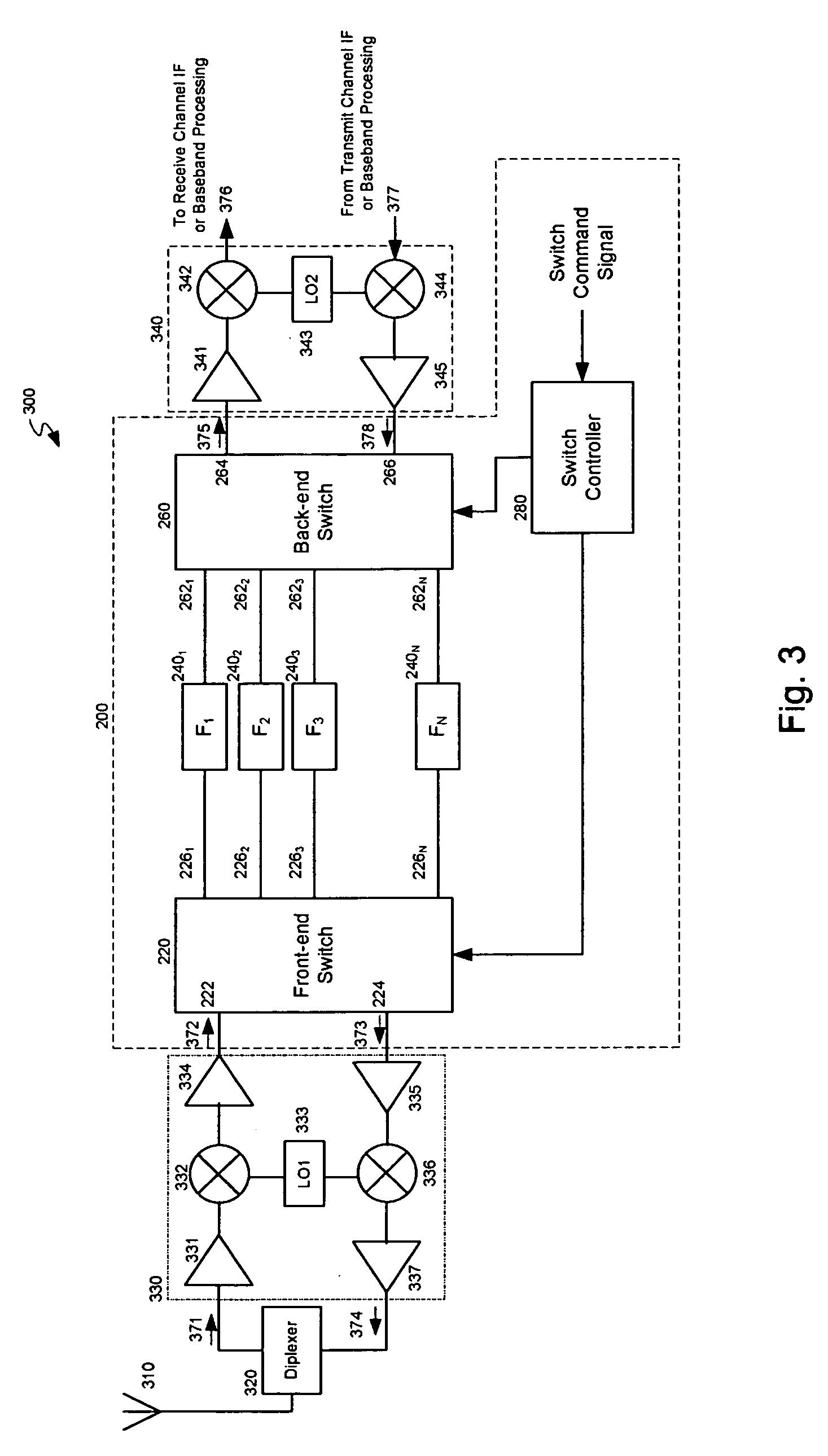Multi-channel filtering system for transceiver architectures
a filtering system and transceiver technology, applied in the field of communication systems, can solve the problems of poor quality or drop of connections, critical limitation or critical limitation of destination receivers in their ability to process intended signals accurately, and achieve the effect of maximizing communication bandwidth
- Summary
- Abstract
- Description
- Claims
- Application Information
AI Technical Summary
Benefits of technology
Problems solved by technology
Method used
Image
Examples
Embodiment Construction
[0015]FIG. 2 illustrates a multi-channel filtering system in accordance with one embodiment of the present invention. The multi-channel filtering system 200 includes a front-end multi-pole, multi-throw switch 220 (“front-end switch” hereafter), filters F1-N 240, a back-end multi-pole, multi-throw switch 260 (“back-end switch” hereafter), and a switch controller 280. The multi-channel filtering system 200 is designed to intersect the transceiver's transmit and receive channels, thereby providing a range of available transmit and receive bandwidths, as described in greater detail below.
[0016]In the exemplary embodiment shown, the front-end switch 220 comprises two poles: a receive pole 222, and a transmit pole 224. The receive pole 222 is configured for coupling to front-end receiver circuitry and components, which may include frequency conversion stages, low noise or buffer amplifiers, limiter and similar components used in the receive channel. The transmit pole 224 is configured for...
PUM
 Login to View More
Login to View More Abstract
Description
Claims
Application Information
 Login to View More
Login to View More - R&D
- Intellectual Property
- Life Sciences
- Materials
- Tech Scout
- Unparalleled Data Quality
- Higher Quality Content
- 60% Fewer Hallucinations
Browse by: Latest US Patents, China's latest patents, Technical Efficacy Thesaurus, Application Domain, Technology Topic, Popular Technical Reports.
© 2025 PatSnap. All rights reserved.Legal|Privacy policy|Modern Slavery Act Transparency Statement|Sitemap|About US| Contact US: help@patsnap.com



